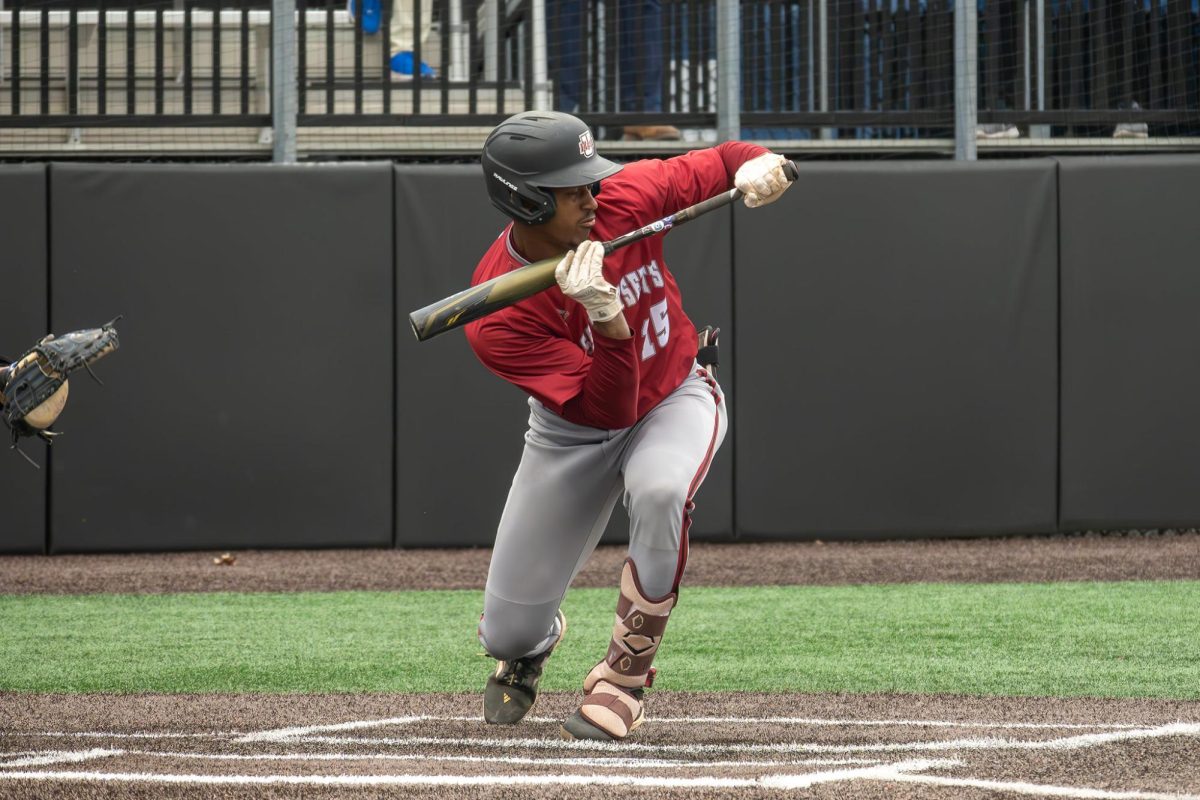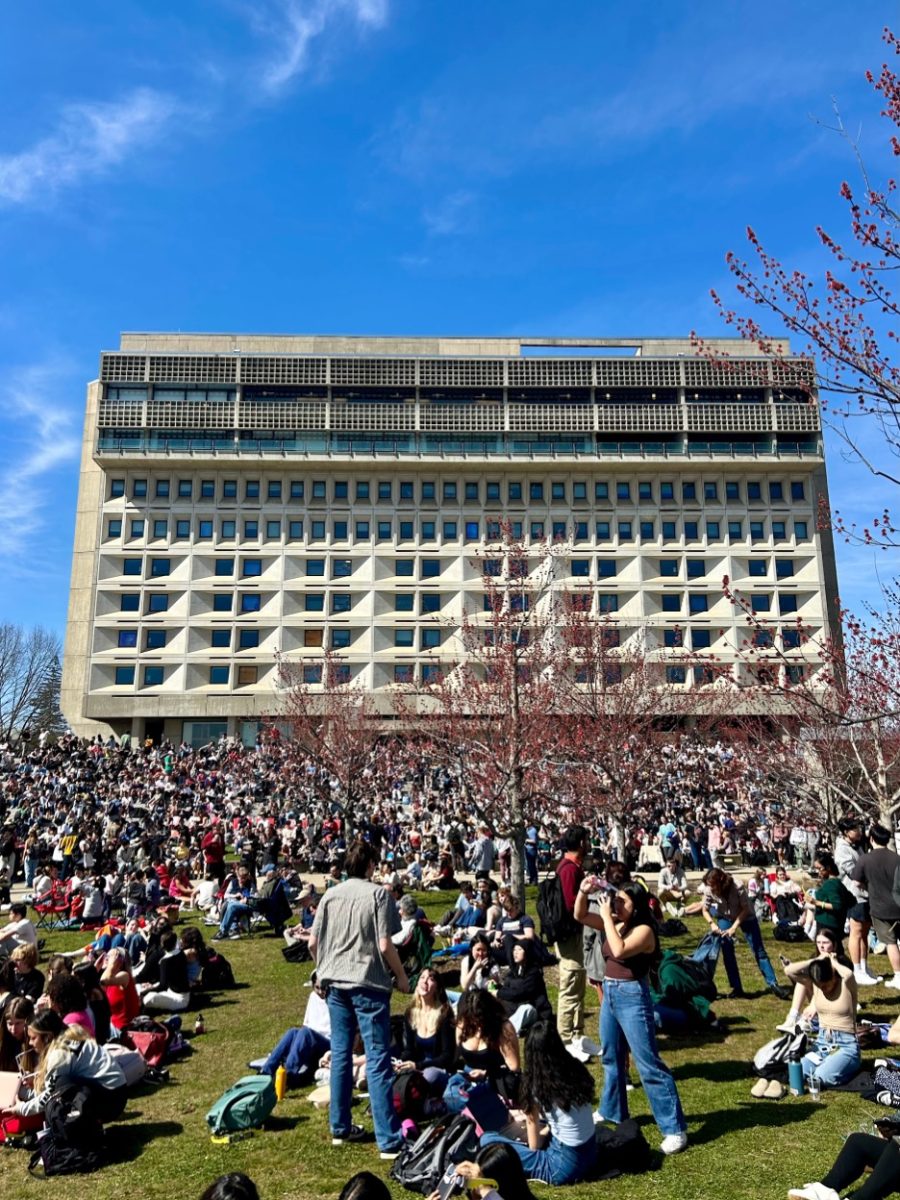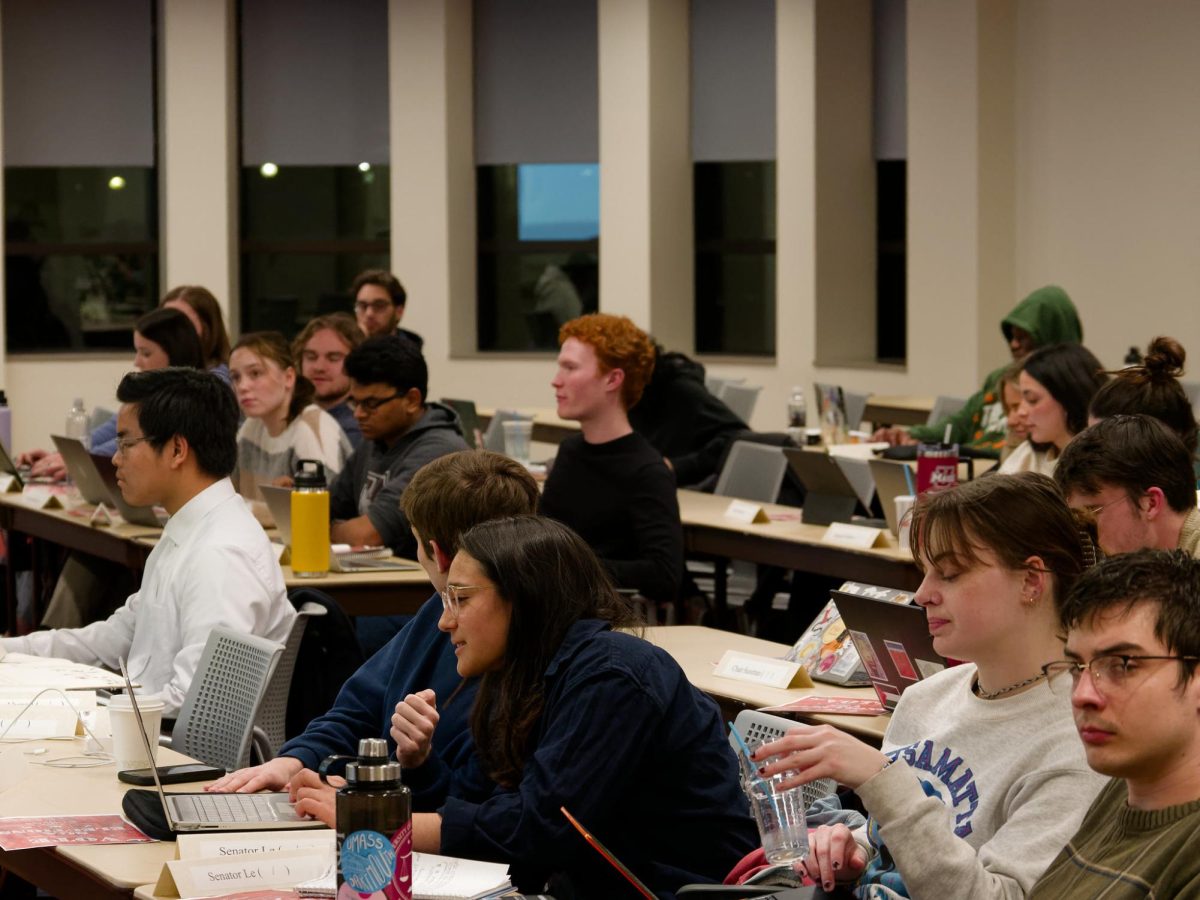
After a swastika was found carved into a men’s bathroom stall on the fourth floor of the Integrated Learning Center, University of Massachusetts administrative leaders sought to reaffirm values of inclusion, but students argue that these acts of aggression are nothing new.
In an email sent to the campus community regarding the incident of vandalism, Chancellor Kumble Subbaswamy said he was “saddened” and “angry.” He added the act was “inconsistent with our campus values of tolerance and inclusion.”
According to the email, the act is being investigated by the UMass Police Department.
UMass Police Chief Tyrone Parham said he was “surprised” by the swastika incident. He added it “absolutely won’t be tolerated” and encouraged people who might know something about the incident to step up and come forward.
Parham said handling the issue extends beyond the police, explaining that “these beliefs come long before the students arrive on campus.” He emphasized though, that the police “can of course instill our values as a campus, that we are inclusive.”
He believes that education in a “structured classroom environment” and training in the residential halls with residential staff and faculty would be an effective strategy to combat such incidents. He added that there’s “a lot to be said for students telling other students, ‘That’s not right, that’s not our culture.’”
A pre-existing trend
The swastika was reported to administration the same day UMass student Jeremy Tibbetts published a column in the Daily Collegian criticizing the University for its response to an incident in December, when photos circulated on the “unofficial” UMass Snapchat story of three students playing “Nazis vs. Jews” beer pong. Tibbetts argued it was indicative of anti-Semitism on campus.
Rabbi Aaron Fine, executive director of Hillel at UMass, commented on this trend of racial/ethnic vandalism, and specifically anti-Semitism, on campus.
“Anti-Semitism is one of the oldest and most persistent forms of hatred and ignorance, one that has plagued humanity for centuries,” Fine wrote in an email to the Collegian. “There has been a disturbing resurgence of anti-Semitism internationally in recent years particularly in Europe. While this incident at UMass is disturbing, unfortunately it is not surprising that anti-Semitism continues to rear its head even here in 2016.”
Fine added that Hillel is “actively reaching out to students to get a better understanding of the extent of anti-Semitism at UMass.”
But the swastika carving is not an isolated act of racial/ethnic vandalism on campus in the past few years.
“One of the common forms of bias-related incidents on campus is hateful and threatening language and imagery scrawled on bathroom walls or on message boards,” Subbaswamy said in his email.
Last academic year, “Kill These N*****s,” was written on the dorm door of Josh Odam in Coolidge Hall. At the time, Odam was a sophomore at UMass and serving as secretary of diversity of the Student Government Association. He discovered the message after returning from activist work in Ferguson, Missouri.
That same month, the Daily Hampshire Gazette reported that two other incidents of racial vandalism occurred on campus. One was written on the door of then-senior Jonathan Romero, a student living in Washington Tower.
According to the report, Romero found “Kill these Mexicans can’t even speak English” written on his door after returning to his room to charge his phone. Romero also said another student in John Quincy Adams Tower had found a racist note on their door but did not provide details.
In March, a racial and homophobic slur was also written on a poster outside of the Graduate Employee Organization office.
Racial/ethnic vandalism is violence
“The first thing is recognizing that it’s not just vandalism, its violence. Violence to the psyche, to the identity of people,” said Stacy Tchouanguem, a senior studying microbiology and one of two policy coordinators for Student Bridges, a Registered Student Organization that works to support marginalized students both on and off campus.
“It’s something that I realize has been used a lot – the word vandalism. Vandalism is you’re just disturbing property. But this is disturbing someone’s person and it’s affecting them mentally,” she explained.
“I think that UMass has always been an unsafe space for students of color,” said Avery Fürst, a third-year graduate student studying labor and social justice education and co-chair of the Graduate Employee Organization.
Fürst explained that racial/ethnic vandalism and violence isn’t necessarily a growing trend but one that is now being “amplified” by student responses.
Tchouanguem said students of color on campus are activists who are saying, “We’re not going to let this stand.”
“And it’s not to say that it hasn’t happened before,” added Tchouanguem, who mentioned the case of racially motivated violence against Jason Vassell as a past example.
In 2008, the Daily Collegian reported that two men, John Bowes and Jonathan Bosse, shouted racial epithets at Vassell, a student of color, and followed a resident into the lobby of Vassell’s dormitory MacKimmie Hall. The three began to fight and Vassell sustained a broken nose in the altercation and injured Bowes and Bosse with a knife. Only Vassell was arrested. He was charged with aggravated assault and battery with a dangerous weapon and two counts of armed assault with intent to rob or murder.
Tchouanguem also spoke on the frustrations she feels, or rather doesn’t, when facing these issues.
“I don’t even know if I’m just immune to it at this point, as a woman, as a student of color,” she said. “You know as a black woman (in a school that is 79 percent white), and just understanding that when I walk outside there is already a view of me that they have and the fact that I have to keep my head up high.”
In terms of micro-aggressions of racism, she said simply, “You sense the environment around you shift as soon as you walk into the room.”
Tchouanguem believes some of the racism stems from “a lot of white students (not talking) about their white privilege.” According to her, it’s not necessarily about guilt or feeling sorry, but being aware of the “system we’re working with and then being able to talk to your counterparts about it.”
“At the end of the day it’s not my job to educate you,” she said.
Administrative responsibilities
On this point of education, Tchouanguem feels the administration can play a key role, saying that by educating the entire student body about issues of racism, gender issues and more, it will liberate all students, not just students of color.
Tchouanguem said she has found the administration to be fairly cooperative following student rallies, town hall meetings and walking to the Whitmore Administration Building to demand a meeting with top university administrators.
Tchouanguem said students have been having regular meetings with Leykia Brill, assistant provost of diversity, who Tchouanguem describes as working tirelessly on these issues. In fact, Tchouanguem has a meeting with Brill and Subbaswamy on March 2nd.
Brill could not be reached for comment as of Wednesday night.
“They realize that we’re not stupid, that we know what’s going on,” she said. She emphasized that the conversations center on telling the University that “we need you guys to take a stand for it too.”
The GEO co-chairs differed from Tchouanguem in this regard, expressing frustration at the lack of real change from administration.
Fürst called the University’s diversity statistics “abysmal” and acknowledged that as a white woman, she was “endemic” of that. She explained that poor financial accessibility and lack of diversity on campus are part of the problem in creating an unsafe culture for marginalized students.
Santiago Vidales, a Latin American literature Ph.D. student and GEO co-chair, agreed with Fürst’s sentiment.
“From the student perspective, UMass should be a national leader in thinking about how to get more people of color and queer folks and working-class students here,” he said.
Members of the Black Student Union and the SGA secretary for diversity could not be reached for comment as of Wednesday night. The stall wall in the ILC that contained the vandalism has since been removed.
Marie MacCune can be reached at [email protected] and followed on Twitter @MarieMacCune.
Editor’s note: A previous version of this story said Stacy Tchouanguem planned to meet with Leykia Brill and Kumble Subbaswamy Wednesday. The meeting was rescheduled for March 2nd, and the story has been updated to reflect that.



















Ed Cutting, Ed. D. • Feb 18, 2016 at 10:10 am
To say that Jason Vassal was a victim of racism is beyond obtuse.
With extensive arrest records, Bowes & Bosse may well have been the Milton Town Drunks (including being found the next morning, passed-out drunk, in a Starbucks bathroom) — but Vassal wasn’t sober either.
And two different cameras recorded *everything* and those pictures are quite revealing — and publically available. I encourage everyone to simply look at the pictures.
Three administrators who did — three BLACK administrators who did (JoAnne Vanin, Esther Terry, & Tom Cole) expelled Vassal because of what the pictures showed him doing. (And wearing, i.e. the ski mask.)
Vanin was then Dean of Students, Terry the Acting Vice Chancellor, Cole the Acting/Interim Chancellor — those are the administrators who make the judicial decisions.
.
Esther Terry had delayed her retirement — she’d not only been Chair of the Afro-Am Department, one of the initial professors who had created the department way-back-when, but had gone on to head what became the Office of Equal Opportunity & Diversity (EO&D) — facts matter.